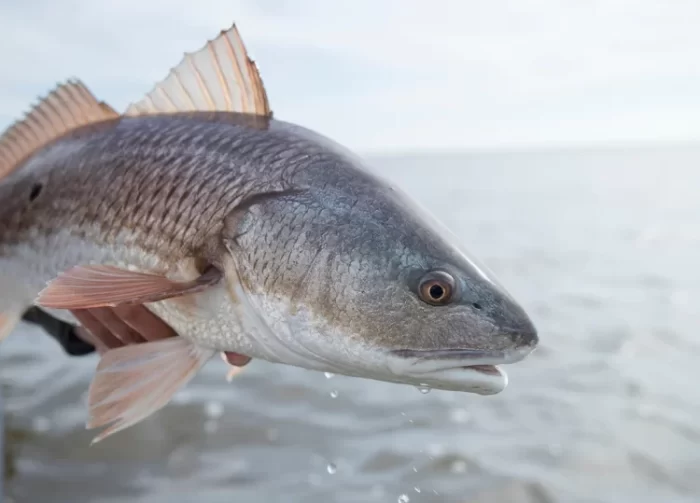With their fighter spirit and tasty fillets, red drum represent a hugely popular target for coastal anglers up and down the Atlantic seaboard. While regularly growing over 40 inches long as “bull reds”, smaller “puppy drum” also roam brackish backwaters. Thankfully this hard-pulling species remains approachable even for novice anglers. With the right lures, tackle, and tactics, landing a red drum provides an unforgettable first catch. This beginner’s guide covers the basics for hooking into these dynamic gamefish from the shoreline or a boat.
Identifying Red Drum
Before catching them, new anglers benefit from simply recognizing redfish on sight. Distinctive features include:
– Coppery-red color along the back fading to white bellies
– Large, elongated first dorsal fin
– One or more black spots found near the base of the tail
– Stocky body shape with humped shoulders
Pups weigh just a few pounds while formidable bull drum can surpass 40+ pound giants. In many areas like the Carolinas, mid-range 15 to 25-pounders roam inshore waters and bays in sizable numbers, prime for fishing.
Best Lures for Beginners
When tackling reds for this first time, best to keep lure choices simple and effective by selecting proven artificial baits that mimic natural prey. Top starter options include:
– Shrimp soft plastic lures fished under a popping cork to resemble live shrimp movements
– Gold spoons which reflect light to mimic fleeing baitfish that reds instinctively attack
– Surface walking lures that imitate struggling mullet and attract explosive strikes
– Subsurface crankbaits in red or firetiger patterns that dive deep while covering water to draw strikes
All these easy-to-use artificial lures can be cast from shore or by boat to hook appetizing meals in front of hunting redfish nearby.
Gearing Up Properly
Tackling hard-charging redfish demands medium weight spinning or baitcasting gear to keep cost down while maintaining needed power. Recommended setups include:
– 7ft medium action rod rated for 15 to 30lb line
– Spincast or baitcast reel filled with 20lb braided line and leader
– 20lb monofilament or 30lb braided line
– 1/0 live bait hooks or 3/0 treble hooks for artificial lures
This balanced combination allows casting less than an ounce up sizable 30+ inch red drum worth framing on the wall as a memorable first catch.
Where to Find Redfish
Flats, marshes, creek mouths and underwater structure like oyster reefs hold good numbers of red drum. Savvy beginners should target areas with plentiful baitfish activity or shrimp populations. Submerged weedlines, dock pilings and downed trees also attract feeding reds. Incoming and outgoing tides usually enhance fish activity and feeding aggression. Experienced anglers in the area can further recommend current local hotspots.
Retrieving Lures
Upon locating promising waters, properly working lures maximizes chances that redfish take interest. Steady retrieves prompting reaction strikes work well for minnow-mimicking hard baits like crankbaits and spoons. Soft plastics shine when twitched erratically or drifted along the bottom. Topwater lures call for sporadic pops separated by pauses to generate fish-calling commotion. Set the hook immediately once a swirl or any tentative bump gets detected!
Conclusion
Thanks to their appetites and shoreline-roaming nature, redfish afford beginners a reasonably conquerable first challenge full of fun and food. Armed with basic knowledge of their appearance, habits and preferred locations, new anglers can soon reel in the hard fighting reds lurking right in their local waters. Mastering go-to lures while fine-tuning retrieves and equipment makes landing feisty puppy drum or bull reds a realistic goal even for first-timers. Soon that memorable trophy photo can decorate the mantle as a proud lifetime memory.

